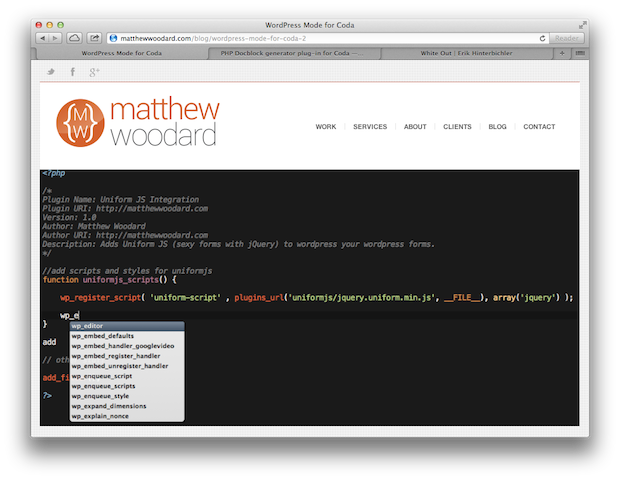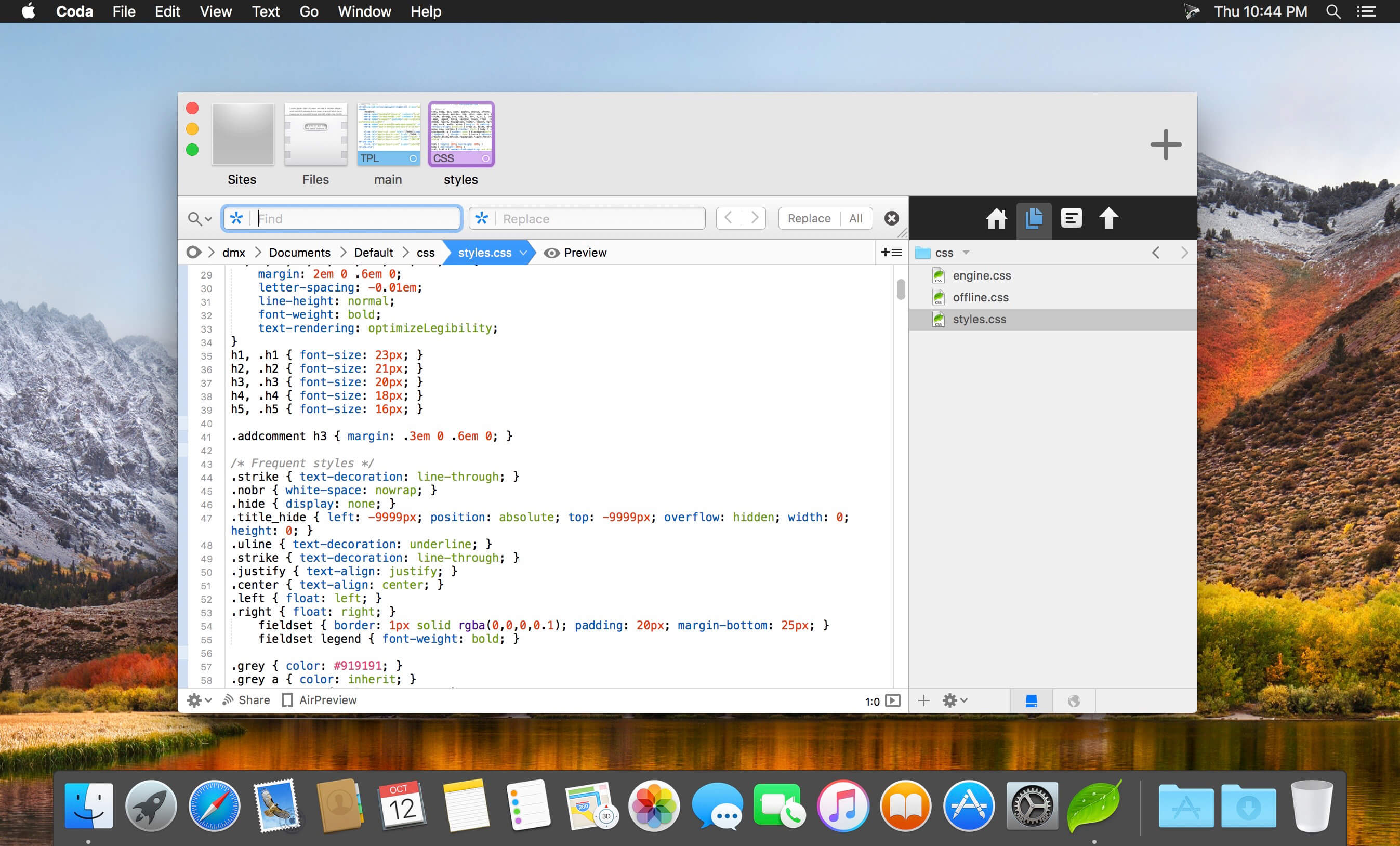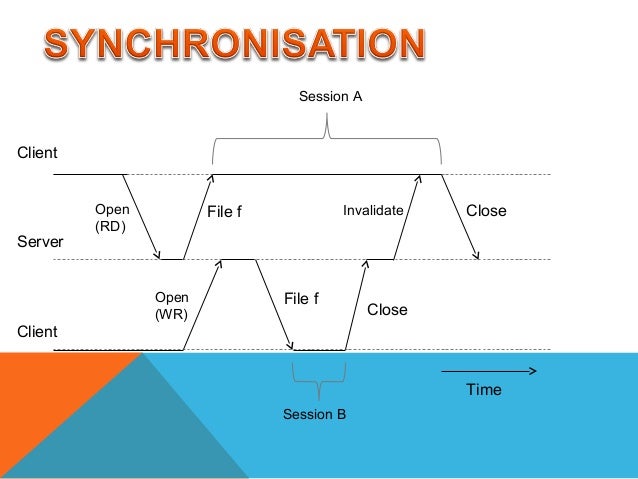

- #Coda 2 project file mac os x#
- #Coda 2 project file install#
- #Coda 2 project file update#
- #Coda 2 project file code#
- #Coda 2 project file download#
If you are interested in future updates or for a version that works in Coda 2, please check out Serge Che’s fork of the project which he is maintaining as part of the zen coding package of plugins.
#Coda 2 project file download#
O’Reilly members experience books, live events, courses curated by job role, and more from O’Reilly and nearly 200 top publishers.I am no longer maintaining TEA for Coda ( here’s why) and the download at right only works with Coda 1. Get Coding with Coda now with the O’Reilly learning platform. One of the final views to discuss is Sites, the core of your project, which we’ll go deeper into in the next chapter. And the top of the sidebar is a dock, where you can drag and drop your most-used views for easy access while you work. We’ll get into the different types of views as we go along.īy default the sidebar sits to the right, but can be changed in Coda’s preferences.
#Coda 2 project file code#
For example, there’s a files view that has a file browser available, then you can switch to the Source Control Management view for managing your code in a version control system, such as Git. The sidebar is a bit of a Swiss Army knife of different views and actions for your projects. This makes for a very easy way to open files from all sorts of locations within your project while taking advantage of the editing window. The path bar serves as a visual reminder of where you are in relation to your project.īut more than that, if you click on any of the individual path items (such as “awesomesauce”) at the moment, a box will pop up and list all the files in a miniature file browser. If you’re working on an index.html file in a directory called awesomesauce in your Mac user’s Sites folder, the path to that file would be /Sites/awesomesauce/index.html. Just underneath the tab bar lies the path bar, which shows the drilled-down path to the file you are editing. The first two tabs will always be the Site you are working from and the file browser tab, respectively. Drag up all the way, and the tabs disappear, leaving only a text reference of your open tabs. Also, the tab bar can be resized by dragging the bottom of the tab bar up. Tabs can be easily closed by hovering over them until an X appears and is clicked. Tabs can include a document, a terminal shell, a book (Coda ships with built-in references for many languages), or a MySQL editor. This lets the coder know which tabs are open, and a blue border highlights which tab is currently active. Now that we’ve got Coda installed, let’s get familiar with its interface ( Figure 1-1).īefore we get too deep into this, we’ll take a look around some of the basics of Coda so we’re on the same page with our terminology.Īcross the top of the app is the tab bar. To start Coda, just navigate to the Applications folder and double-click on the Coda 2 icon (but don’t do this yet).

#Coda 2 project file install#
My preference is to buy directly, but ultimately, the choice is yours.Īfter downloading Coda, simply drag the Coda 2 application to your Applications folder to install it. Panic obviously doesn’t mind if you choose to go the Mac App Store route since it provides its apps through there, as well. Perhaps more importantly, if you care about rewarding developers for their hard work, purchasing directly through them gives them a greater cut of the purchase.

#Coda 2 project file update#
Also, iCloud Site data syncing across computers is a feature only available to apps sold through the App Store.īut, there’s a catch-Apple has its requirements for what is “approved” for sale through the store, and since apps must go through Apple’s review process, it might take additional time before you get an update to an app that’s already been updated through the developer’s website. The Mac App Store will alert you when any of your apps has an update, and you can choose to update them all at once or individually. So should you purchase from the Mac App Store or buy directly from the developer?įor the consumer, the store is an easy way to manage your applications and their updates. Some developers choose to sell their apps only through the Mac App Store, while others, like Panic, also offer the apps for purchase on its website. For this, Apple takes a 30 percent cut of each sale. Much like a record label or book publisher, the store provides a way for consumers to easily find new apps they might not otherwise have discovered on their own.
#Coda 2 project file mac os x#
As of Mac OS X v10.6.6, Apple introduced the Mac App Store for developers to sell and host their applications in a one stop shop for consumers.


 0 kommentar(er)
0 kommentar(er)
